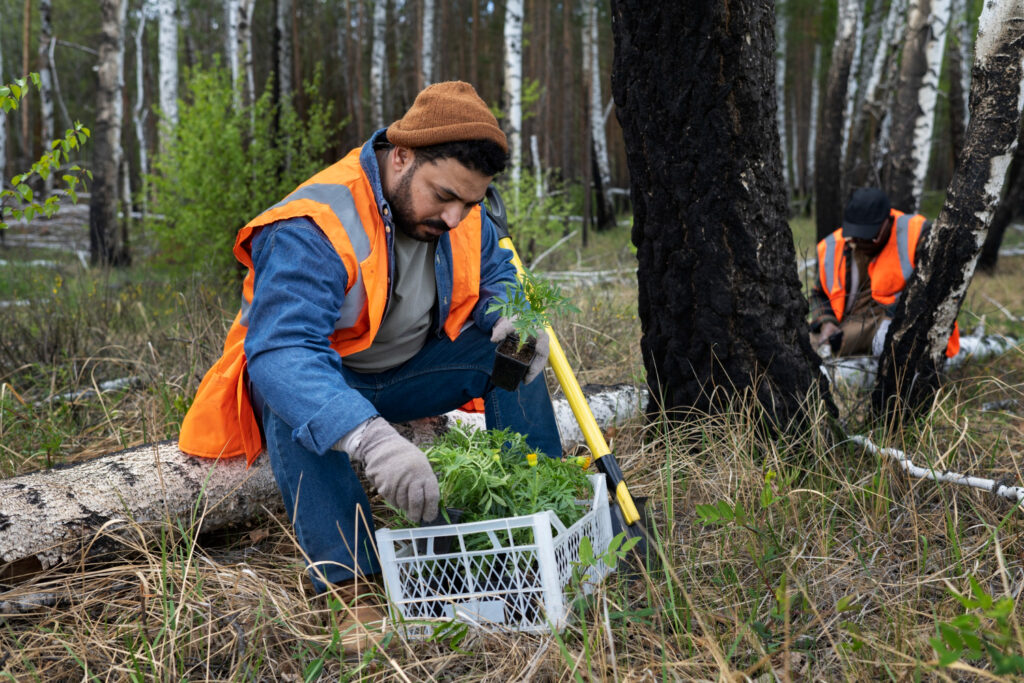The Role and Implications of Biotechnological Tools in Forestry

La biotecnología permite reproducir árboles resistentes a plagas y adaptados al cambio climático, optimizando la gestión forestal.
Biotechnology has transformed numerous industries, and forestry is no exception. In this regard, many wonder: How are biotechnological tools changing the way we manage and cultivate our forests?
According to the United Nations Convention on Biological Diversity, biotechnology refers to any technological application that uses biological systems and living organisms to modify products or processes. In forestry, these tools have been developed in three main areas: vegetative reproduction, molecular genetic markers, and genetically modified organisms (GMOs).
Vegetative reproduction allows for the propagation of plants from plant tissues, resulting in genetically identical individuals. This technique includes methods such as grafting and rooting of cuttings, which are essential for the production of trees intended for reforestation. Micropropagation, an advanced cloning method, provides a way to create clonal lines from small tissue samples, facilitating large-scale production of trees selected for their genetic value. However, the high costs associated with these technologies can be a challenge.
Cryopreservation and in vitro storage are other critical techniques. Storing tissue at very low temperatures helps preserve genetic variability and allows the evaluation of genotypes for future production. These techniques are particularly useful for species that are difficult to conserve, such as those producing recalcitrant seeds.
Molecular genetic markers are powerful tools that enable the identification and selection of desirable traits in trees. These markers facilitate marker-assisted selection (MAS), which, although not yet routine in many breeding programs, holds great potential to accelerate the selection process for commercial species, such as certain varieties of pine and eucalyptus.
Implications of Biotechnology in Forest Management
The use of biotechnological tools in forestry has several significant implications. First, it contributes to sustainability. Genetically modified trees can be designed to be more resistant to pests and diseases, reducing the need for chemical pesticides. Moreover, vegetative reproduction techniques and in vitro selection can help maintain genetic diversity in forests—a critical factor for ecological resilience.
Second, biotechnology enhances efficiency in wood production. By enabling faster and more effective propagation, it is possible to increase the number of trees available for harvest, thereby helping to meet the growing demand for sustainable wood. This is especially important in a global context where pressure on forest resources is intense.
However, the implementation of these technologies also raises challenges. Public perception of GMOs, for example, remains a sensitive issue. There are concerns about environmental and health impacts associated with the use of genetically modified organisms. Therefore, it is essential that research and implementation of biotechnologies be conducted transparently and with a focus on rigorous scientific evaluation.
The Future of Biotechnology in Forestry
The development of biotechnology in forestry is constantly evolving. Future research will likely focus on improving existing techniques and exploring new applications. It is anticipated that the combination of genomics and biotechnology will open new opportunities for species improvement, increasing both productivity and the sustainability of forest ecosystems.
Governments and research institutions play a crucial role in promoting the responsible use of these technologies. Encouraging collaboration among scientists, industry stakeholders, and local communities can facilitate the adoption of biotechnological practices that benefit both the environment and the economy. Proper regulation will be essential to ensure that the use of biotechnology in forestry is conducted ethically and sustainably.








